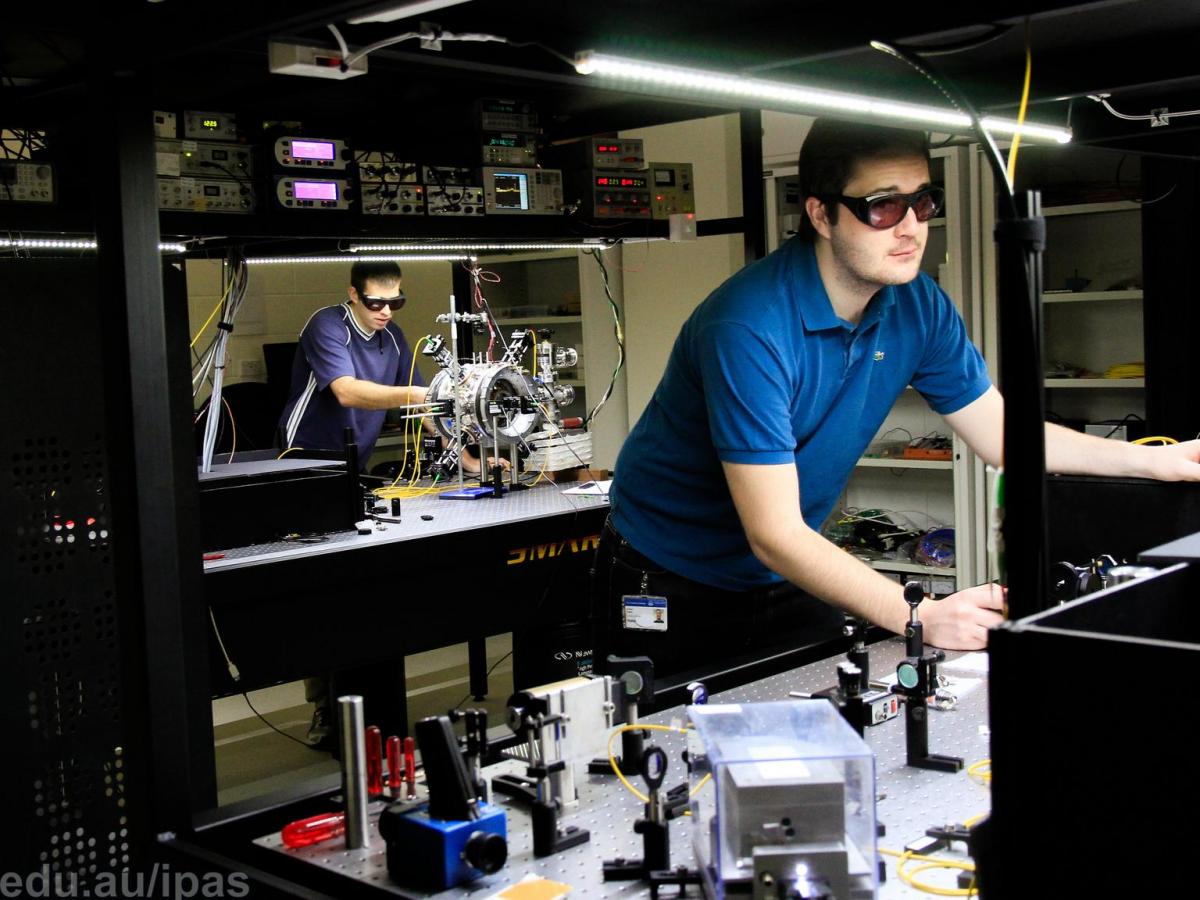Optics, Lasers and Photonics
Research and development in optics, photonics and lasers occurs in collaboration with prominent international research institutes, projects, and with industry and defence partners.

This work is supported by state-of-the-art infrastructure.
We work with the:
- The Adelaide node of the ARC Centre of Excellence for Gravitational Wave Discovery (OzGrav); and
- The University's Institute for Photonics and Advanced Sensing (IPAS)
Research themes
-
Advanced optics and lasers for gravitational wave detectors

The Adelaide node of OzGrav is a core contributor to the Advanced LIGO (aLIGO) and Advanced Virgo (AdV) gravitational wave detectors, which detected gravitational waves.
- We developed the ultra-sensitive Hartmann wavefront sensors (HWS) installed in the aLIGO and AdV detectors. These sensors are central to the control of absorption-induced wavefront distortion in the test-mass mirrors at the core of the detectors, without which the sensitivity of the detectors would be reduced.
- We develop advanced optics and lasers for, and work with LIGO Laboratory and the LIGO Scientific Collaboration , to improve the sensitivity of aLIGO.
- We develop new technology for third-generation (3G) gravitational wave detectors, which are required to realise the full potential of multi-messenger gravitational astrophysics.
Advanced optical systems for current detectors
Current projects include:
- Improved HWS for aLIGO using latest sCMOS cameras and new analyses.
- New active wavefront control systems.
- A new laser beam profiler that can simultaneously measure all beam parameters.
- A new system for high-precision measurement of spherical (and aspheric) optics.
- High spatial resolution measurement of large aperture optics using Hartmann sensors and aperture stitching.
- A new 'optical lock-in camera' for frequency-selective imaging of coherent light-fields.
- A new cavity-eigenmode-modulation (CEM) technique for mode-matching to multiple optical cavities.
- We lead the international development of the FINESSE numerical simulation for modelling laser interferometers.
- Installation and commissioning of new optical systems in aLIGO, in collaboration with LIGO Laboratory.
Technology for 3G detectors
Current designs for 3G detectors incorporate cryogenic silicon test-mass mirrors, requiring new infrared (IR) laser sources, wavefront sensors, beam profilers and adaptive optics, and extensive testing of new materials.
Research projects include:
- New HWS wavefront sensors and beam profilers for the IR.
- Active wavefront control systems for 3G detectors.
- High precision measurement of optical absorption of candidate materials at wavelengths near 2um
- Development of ultra-stable high-power lasers at wavelengths near 2um.
Key contacts
Researchers
-
Defence technologies
Optics and photonics research is used across various innovative projects that improve defence technologies. These projects include the cryogenic sapphire clock, projects using fibre-based quantum memory, and upconversion fluorescence for explosive detection applications.
-
Environmental and agricultural sensing
Our activities in environmental and agricultural sensing cover a diverse range of projects including:
Project Key contact Airborne measurement of fugitive methane emissions Australian facility for noble-gas radio isotope measurements using atom trap trace analysis (ATTA) Next-generation photonic magnetic sensing for geophysical exploration
Windfield measurement using coherent lidar -
Food and beverage analysis
We collaborate on several projects involving food and beverage analysis, including:
-
Medical and health
Our optics, photonics and laser research extends to innovative projects that improve human health. These include:
Project Key contact Smart needle for safer and more effective brain surgery Prof Robert McLaughlin Optical fibre sensing to aid breast cancer research Dr Erik Schartner We also have a variety of hospital-based medical physics projects which focus on improving healthcare through enhanced clinical radiotherapy and medical imaging, and future clinical applications of proton therapy.
-
Mining and mineral processing
We're behind some of the latest innovations in one of Australia's largest industries, including:
